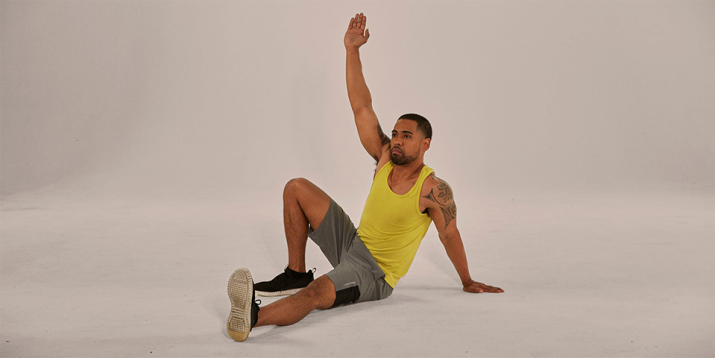How to Do the Sit-Through

At first glance, the sit-through looks more like a breakdancing move than a strength-training exercise. It’s fun. It’s got flair. It requires agility and balance. And it’s not something you do to pack on tons of muscle. But after a couple of sets — as your heart rate begins to rise, as your breathing becomes faster, and as sweat starts to bead on your forehead — you’ll realize why the sit-through is a favorite of trainers everywhere: It packs one hell of a total-body punch.
Although primarily a core exercise, the sit-through also works your shoulders and hips while helping you build coordination and mobility from head to toe. Ready to add it to your workouts? Follow along with Jabari in the video below as he demonstrates perfect form.
Sit-Through: Step-by-Step Instructions
Muscles targeted: Core
Featured in: PiYo and CORE DE FORCE, both available on Beachbody On Demand.
- Assume a bear crawl position with your arms straight, your hands below your shoulders, and your knees bent 90 degrees below your hips. (Only your hands and toes should touch the ground.)
- Keeping your back flat, core braced, and right hand on the floor, lift your left arm and right leg, and rotate to your left, pivoting on your left foot as you thread your right leg beneath you and extend it straight on the floor. (You should now be sitting.)
- Reverse the movement to return to the starting position, and repeat to your other side, lifting your right hand and left leg, and pivoting on your right foot. Continue alternating sides.
Make it easier: Go slower.
Make it harder: Perform a “kick through,” keeping your leg and butt elevated off the floor. Want to make it even more challenging? Touch your toes with your opposite hand when you extend your leg — a move called the hip escape toe tap in CORE DE FORCE.
Bonus tip: Jabari makes the sit-through look easy, but it might take a few attempts before your mind and muscles synchronize their efforts. Go slowly at first — especially if you’ve never performed this exercise before — until the movement pattern becomes fluid.
